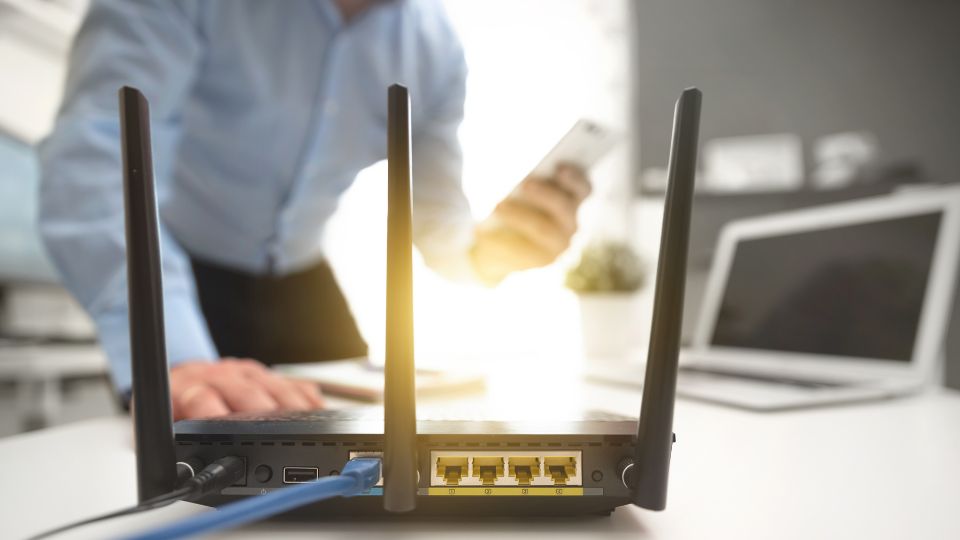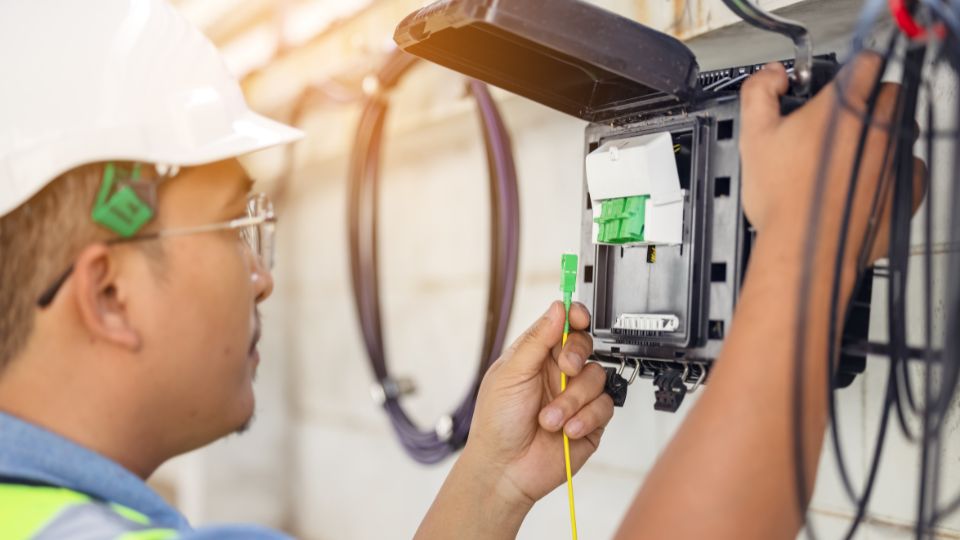That dreaded spinning wheel during your most important video call. The frustrating WiFi dead zone in the conference room. The mysterious signal drops that seem to happen at the worst possible moments. If these scenarios sound familiar, you’re not alone. But here’s the truth: most wireless connectivity issues aren’t random at all – they’re the result of poor network planning that could have been prevented with a professional wireless site survey.
The Real Cost of Poor WiFi Coverage
Imagine losing a million-dollar client because your video presentation froze at the crucial moment. Or picture your employees spending countless hours moving between locations just to find a stable connection. Poor wireless coverage isn’t just an inconvenience – it’s a silent productivity killer that impacts your bottom line every single day.
Studies show that the average employee loses 30 minutes per day dealing with poor wireless connectivity. Multiply that across your workforce, and you’ll start to see why optimizing your wireless network isn’t just an IT issue – it’s a business imperative.

What Makes a Professional Wireless Site Survey Different
Anyone can walk around with a WiFi analyzer app on their phone, but professional wireless site surveys go far beyond simple signal strength measurements. A professional survey combines sophisticated equipment, years of expertise, and deep understanding of radio frequency (RF) behavior to create a comprehensive picture of your wireless environment.
Think of it like the difference between taking your temperature at home versus getting a full medical checkup. While both give you information about your health, only one provides the complete picture needed for optimal well-being.
Essential Components of a Professional Survey
Physical Assessment
- Building material analysis
- Architectural interference identification
- Floor plan evaluation
- Cable infrastructure review
- Access point placement optimization
RF Environment Analysis
- Signal strength mapping
- Interference detection
- Channel utilization
- Noise floor measurement
- Coverage overlap assessment
The Science Behind the Survey
Radio waves don’t travel through your building like light through air – they bounce, bend, reflect, and get absorbed by various materials in unpredictable ways. That beautiful glass conference room? It might be creating a mirror effect that’s causing interference. Those metal filing cabinets? They could be creating shadows in your wireless coverage.
Professional surveyors understand these complex interactions and use specialized tools to map how RF signals actually behave in your specific environment. This isn’t guesswork – it’s applied physics backed by precise measurements and years of practical experience.
Beyond Signal Strength: The Complete Picture
A common misconception is that wireless surveys are just about finding dead zones and boosting signals. In reality, a professional survey examines multiple factors that affect your network’s performance. Signal strength is just one piece of a complex puzzle that includes channel interference, client density, application requirements, and future scalability needs.
Consider a busy office floor where dozens of devices compete for bandwidth. Simply adding more access points or boosting power might actually make things worse by creating co-channel interference. Professional surveyors understand these nuances and design solutions that balance coverage, capacity, and performance.

Planning for Modern Workplace Demands
Today’s wireless networks need to support an ever-growing array of devices and applications. Video conferencing, cloud applications, IoT devices, and mobile phones all compete for bandwidth. A professional survey helps ensure your network can handle current demands while remaining flexible enough to accommodate future growth.
The rise of remote work has made reliable wireless connectivity more critical than ever. When every meeting includes virtual participants, even minor wireless issues can disrupt entire teams. Professional surveys help create the robust, reliable infrastructure needed for seamless hybrid collaboration.
The Role of Predictive Modeling
Modern survey tools allow professionals to create detailed models of your wireless environment before making any physical changes. These models help optimize access point placement, channel assignments, and power settings without the costly trial and error of moving equipment around.
Think of it as a flight simulator for your wireless network. Just as pilots practice scenarios safely on the ground, predictive modeling lets engineers test different configurations virtually before implementing them in your environment.
Common Issues Revealed Through Surveys
Poor wireless performance often stems from issues that aren’t immediately obvious. A professional survey might reveal that your network struggles not because of weak signals, but because of hidden interference from a neighboring office’s wireless network. Or perhaps your access points are actually too powerful, causing devices to stick to distant APs instead of connecting to closer ones.
Understanding these root causes is crucial for implementing effective solutions. Rather than throwing more hardware at the problem, professional surveys help identify and address the underlying issues affecting your network’s performance.
Real-World Impact of Professional Surveys
Organizations that invest in professional wireless surveys typically see dramatic improvements in network performance and reliability. One healthcare facility reduced help desk calls related to wireless issues by 80% after implementing changes recommended by a professional survey. A university campus eliminated dead zones and increased average connection speeds by 60% through optimized access point placement identified during their survey.
These aren’t just technical improvements – they translate directly into better productivity, happier users, and smoother operations. When your wireless network works as expected, your team can focus on their work instead of fighting with technology.
Future-Proofing Your Wireless Infrastructure
Technology evolves rapidly, and today’s adequate wireless coverage might not meet tomorrow’s demands. Professional surveys help ensure your wireless infrastructure can scale and adapt to future needs. This might include planning for higher device densities, new applications, or emerging technologies like WiFi 6E and augmented reality.
A well-planned wireless network becomes a platform for innovation rather than a limitation. Whether you’re considering IoT deployments, location-based services, or other advanced applications, having a properly surveyed and optimized wireless foundation is essential.

Making the Most of Your Survey
To maximize the value of a professional wireless site survey, prepare to share detailed information about your current and future needs. This includes:
- Expected user counts and device types
- Critical applications and their requirements
- Plans for growth or changes in space utilization
- Budget constraints and timelines
- Specific problem areas or concerns
Conclusion
In today’s wireless-first world, the importance of professional wireless site surveys cannot be overstated. They’re not just technical exercises – they’re strategic investments in your organization’s productivity, employee satisfaction, and future capabilities. Whether you’re setting up a new space, troubleshooting existing issues, or planning for growth, professional wireless surveys provide the insights and guidance needed for success.
Don’t let wireless issues hold your organization back. A professional wireless site survey is your first step toward creating a robust, reliable, and future-ready wireless infrastructure that supports your business goals instead of hindering them.
Experience the difference that professional wireless planning can make. Contact us today to schedule a comprehensive wireless site survey and take the first step toward flawless wireless connectivity.

